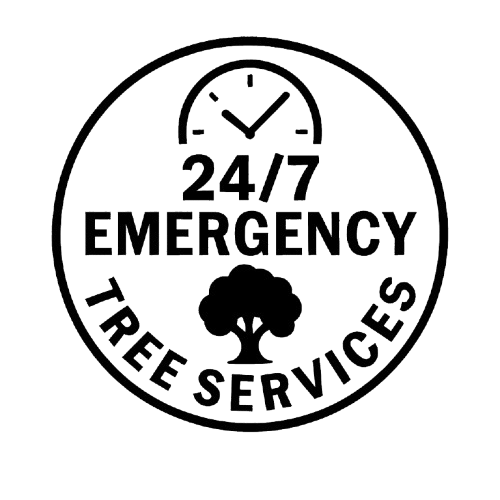NYC’s urban trees are vital for improving air quality, reducing heat, and enhancing the city’s natural beauty. However, these trees face significant threats from invasive pests that can cause widespread damage if not properly managed. Understanding the common pests affecting NYC trees and learning prevention methods is essential for residents and city officials to protect the city’s green spaces.
Key Takeaways:
- Common Pests to Watch For: NYC’s trees are at risk from invasive species like the Emerald Ash Borer, Asian Longhorned Beetle, and Gypsy Moth, which can lead to significant tree loss if not detected early.
- Importance of Early Detection: Regular inspections and prompt identification of signs like exit holes, dying branches, or woolly masses on tree needles can prevent severe infestations and save trees.
- Prevention Strategies: Implementing biological controls, applying chemical treatments, and maintaining overall tree health through proper care is crucial to preventing pest damage and preserving NYC’s urban forest.
Common Pests in NYC Trees
Understanding the common pests that threaten tree health is crucial to effectively protecting NYC’s urban forest. Below is an overview of the city’s most significant pests affecting trees.
Emerald Ash Borer (EAB)
A tiny, shiny green insect is specific to ash trees and endemic to Asia.
- Signs of Infestation:
- D-shaped exit holes: Adult beetles create D-shaped holes (~1/8 inch wide) when exiting the tree.
- Dying branches: Thinning and dieback starting from the upper canopy.
- Bark splitting: Vertical splits in the bark reveal S-shaped larval galleries underneath.
- Impact: The EAB disrupts the tree’s ability to transport water and nutrients, leading to widespread ash tree mortality within 2-4 years of infestation.
Asian Longhorned Beetle (ALB)
A giant, black beetle with white spots and long, banded antennae.
- Signs of Infestation:
- Large round exit holes: Perfectly round holes (~3/8 inch diameter) on the trunk and branches.
- Sawdust around tree base: Coarse sawdust (frass) accumulated on the ground or in branch crotches.
- Impact: ALB attacks various hardwoods, including maples and elms, causing structural weakness and potentially killing the tree if not managed promptly.
Gypsy Moth (Lymantria dispar)
An invasive moth species whose caterpillars feed on the foliage of over 300 tree and shrub species.
- Signs of Infestation:
- Egg masses on bark: Tan-colored, fuzzy egg masses attached to trunks and branches.
- Chewed leaves: Irregular leaf edges or complete defoliation.
- Impact: Repeated defoliation weakens trees, making them more susceptible to diseases and other pests. It can also lead to tree death after several consecutive years.
Southern Pine Beetle (SPB)
A tiny, reddish-brown beetle that primarily infests pine trees.
- Signs of Infestation:
- Yellowing needles: Needles fade from green to yellow to red before falling off.
- Pitch tubes: Small, popcorn-like resin masses on the bark where beetles have entered.
- Serpentine galleries: S-shaped tunnels under the bark created by larvae.
- Impact: SPB can rapidly kill pine trees and spread through stands, causing significant ecological and economic damage.
Hemlock Woolly Adelgid (HWA)
A minuscule, aphid-like insect that feeds on hemlock tree sap.
- Signs of Infestation:
- White woolly masses: Cotton-like balls at the base of needles on the underside of branches.
- Thinning canopy: Loss of needles leading to sparse foliage.
- Impact: Infested hemlocks decline health and can die if untreated within 4-10 years, affecting forest composition and wildlife habitat.
Summary of Common Pests
Pest | Description | Signs of Infestation | Impact |
Emerald Ash Borer (EAB) | Metallic green beetle targeting ash trees |
| Widespread ash tree mortality |
Asian Longhorned Beetle (ALB) | Black and white beetle with long antennae |
| Damage to hardwoods like maples and elms |
Gypsy Moth (Lymantria dispar) | Invasive moth with defoliating caterpillars |
| Weakening and potential death of trees |
Southern Pine Beetle (SPB) | Small brown beetle attacking pines |
| Devastation of pine populations |
Hemlock Woolly Adelgid (HWA) | Aphid-like insect on hemlocks |
| Decline and death of hemlock trees |
Impact of Pests on NYC Trees
Invasive pests pose a significant threat to the health and longevity of New York City’s urban forest. Their impact extends beyond individual trees, affecting the city’s environment, economy, and cultural landscape.
Environmental Damage
- Loss of Tree Canopy: The widespread destruction of trees leads to a reduced tree canopy, diminishing the city’s natural ability to filter air pollutants and produce oxygen. This loss adversely affects urban air quality and contributes to higher concentrations of harmful contaminants.
- Urban Heat Island Effect: Trees are crucial in moderating city temperatures by providing shade and releasing moisture into the air through transpiration. A diminished tree canopy exacerbates the urban heat island effect, leading to higher temperatures, increased energy consumption for cooling, and more significant strain on power grids.
- Ecosystem Disruption: Trees provide habitat and food sources for various wildlife species. The decline in tree populations disrupts local ecosystems, reducing biodiversity and potentially losing native species.
Economic Costs
- Increased Municipal Spending: The city faces elevated costs associated with removing dead or infested trees to prevent the spread of pests. These include expenses for labor, equipment, and safe disposal methods.
- Tree Replacement and Maintenance: Replacing lost trees requires significant investment in purchasing new saplings, planting them, and providing ongoing care to ensure their survival. This places additional financial burdens on city budgets and community organizations.
- Impact on Property Values: Healthy, mature trees enhance property aesthetics and can increase real estate values. Losing trees may decrease property values and make neighborhoods less attractive to potential residents and businesses.
Aesthetic and Cultural Impacts
- Loss of Iconic Trees and Landscapes: Many of NYC’s trees are historic and contribute to the unique character of neighborhoods and parks. The death of these trees alters familiar landscapes, affecting community identity and heritage.
- Reduced Quality of Life: Trees provide shade, beauty, and a sense of tranquility in the bustling urban environment. Their absence can diminish recreational spaces and negatively impact residents’ mental and emotional well-being.
- Cultural Heritage Loss: Some trees are integral to local traditions and histories. Their loss can sever connections to cultural narratives and diminish the richness of community stories and experiences.
Prevention and Control Measures
Effectively managing and preventing pest infestations in NYC’s trees requires a combination of proactive strategies, community involvement, and professional interventions. The following measures are essential in safeguarding the urban forest against pests.
Regular Tree Inspections
- Importance of Early Detection: Early identification of pest infestations is critical to prevent their spread to healthy trees. Regular inspections allow for timely intervention, reducing the potential for widespread damage.
- Community Reporting: Residents play a vital role in monitoring tree health. Suppose unusual signs such as strange insect activity, damage to leaves or bark, or abnormal tree decline are observed. In that case, they should be reported to local authorities like the NYC Parks Department or a certified arborist.
Biological Control Methods
- Natural Predators: Introducing natural predators is an eco-friendly way to control invasive pest populations. These biological agents target specific pests without harming other wildlife or the environment.
- Parasitic Wasps Against EAB: Certain species of parasitic wasps have been released as biological control agents for the Emerald Ash Borer. These wasps successfully suppress the pest population and stop it from spreading by laying eggs inside EAB larvae.
Chemical Treatments
- Use of Insecticides: When applied correctly, chemical treatments can effectively prevent or control pest infestations. Insecticides can target pests at various life stages, helping to protect trees from damage.
- Safe Application Methods:
- Trunk Injections: Delivering insecticides directly into the tree’s vascular system minimizes environmental impact and ensures the chemical reaches the target pests.
- Soil Treatments: Applying systemic insecticides to the soil allows trees to absorb the chemicals through their roots, providing internal protection against pests.
- Professional Guidance: It is essential to consult with certified professionals to determine the appropriate chemicals and application methods, ensuring safety for people, pets, and the environment.
Tree Health Maintenance
- Proper Care Practices: Healthy trees are more resilient to pest attacks. Regular maintenance strengthens trees and reduces their susceptibility to infestations.
- Watering: Adequate watering, especially during dry periods, helps maintain tree vigor.
- Mulching: Applying mulch conserves soil moisture, regulates soil temperature, and prevents weed competition.
- Pruning: Removing dead or diseased branches prevents the spread of pests and promotes healthy growth.
- Physical Barriers:
- Tree Wraps and Guards: Installing protective wraps or guards around tree trunks can deter bark-damaging insects and rodents.
- Sticky Bands: Sticky bands placed on tree trunks can trap crawling insects like caterpillars, preventing them from reaching the canopy.
Public Awareness Campaigns
- Educational Initiatives: Public education is crucial in managing tree pests. Awareness campaigns inform residents about the signs of infestations and the importance of early reporting.
- NYC’s Efforts:
- Workshops and Seminars: The city organizes events to educate the public on tree care and pest identification.
- Informational Materials: Distribution of brochures, posters, and online resources helps spread knowledge about pest threats and prevention methods.
- Community Engagement: Programs like tree planting events and neighborhood watch groups encourage residents to protect local trees actively.
NYC Initiatives and Resources
New York City has established various initiatives and provides resources to protect and enhance the health of its urban forest. These efforts involve dedicated city programs, partnerships with professionals, and accessible tools for residents to participate in tree care and pest management.
City Programs Dedicated to Tree Health
- NYC Parks’ Tree Pest Detection Program
- Objective: Focuses on early detection and management of tree pests to prevent widespread infestations.
- Activities:
- Regular monitoring of trees in parks and along streets.
- Training staff and volunteers to identify signs of pest activity.
- Implementing rapid response measures when pests are detected.
- Impact: Early intervention helps control outbreaks and minimize damage to the city’s tree population.
- MillionTreesNYC Initiative
- Overview: A citywide program that successfully planted one million new trees across the five boroughs, enhancing urban greenery.
- Continued Efforts: Ongoing maintenance and planting to replace lost trees and increase biodiversity.
- Community Engagement: Encourages resident participation in tree planting and stewardship activities.
Collaboration with Local Arborists and Pest Control Agencies
- Professional Partnerships
- Arborists and Horticulturists:
- Work with city agencies to assess tree health and risk levels.
- Provide expert recommendations for treatment and preventive care.
- Pest Control Specialists:
- Assist in developing integrated pest management strategies.
- Offer training to city staff on the latest control methods and technologies.
- Arborists and Horticulturists:
- Joint Initiatives
- Research Projects: Collaborate on studies to better understand pest behaviors and effective control measures.
- Educational Programs: Host workshops and seminars on tree care and pest management for professionals and the public.
Availability of Online Resources and Tools for Residents
- NYC Street Tree Map
- Features:
- An interactive map displaying every street tree in the city.
- Information on tree species, size, and health status.
- Resident Involvement:
- Users can record tree care activities like watering or mulching.
- Report tree conditions or pest sightings directly through the platform.
- Features:
- Tree Pest Identification Guides
- Online Materials:
- Detailed guides with images and descriptions of common tree pests.
- Instructions on how to identify signs of infestation.
- Access: Available on the NYC Parks website and other affiliated platforms.
- Online Materials:
- Reporting and Communication Tools
- NYC 311 Service:
- Residents can report unhealthy trees or pest infestations via phone, website, or mobile app.
- Submissions are routed to appropriate city departments for action.
- Educational Outreach:
- Email newsletters and social media updates inform residents about pest threats and tree care tips.
- NYC 311 Service:
NYC Initiatives and Resources
Initiative/Resource | Description | How Residents Can Engage |
NYC Parks’ Tree Pest Detection Program | Early pest detection and management efforts | Report pest signs; participate in training |
MillionTreesNYC Initiative | Citywide tree planting and maintenance program | Join planting events; care for neighborhood trees |
Professional Collaborations | Partnerships with arborists and pest control experts | Attend workshops; consult professionals |
NYC Street Tree Map | Interactive map of street trees with care options | Log care activities; report issues |
Tree Pest Identification Guides | Online resources for recognizing tree pests | Learn and share information; monitor local trees |
NYC 311 Service | Platform to report tree health concerns | Submit reports via phone, website, or app |
Educational Outreach Programs | Workshops and communications on tree care | Participate in events; stay informed |
FAQs
What are the most common pests affecting NYC trees?
The most common pests include the Emerald Ash Borer, Asian Longhorned Beetle, Gypsy Moth, Southern Pine Beetle, and Hemlock Woolly Adelgid.
How can I tell if a tree is infested with pests?
Look for signs such as unusual exit holes in the bark, yellowing needles, chewed leaves, or the presence of egg masses and insect larvae.
Can I treat tree pests on my own?
Some treatments, like insecticide sprays or soil treatments, can be done by homeowners, but in cases of severe infestations, it’s best to consult an arborist.
What is the city doing to prevent pest infestations in trees?
NYC runs public awareness campaigns, regularly inspects trees, and applies biological and chemical controls where needed to manage pest populations.
How can I help protect trees from pests in my neighborhood?
Participate in tree inspections, report any signs of pests, and maintain tree health by watering, mulching, and pruning regularly.
Conclusion
Protecting New York City’s trees from common pests is a collective effort vital to the city’s environmental health, economic well-being, and cultural heritage. Residents and authorities can take proactive actions when they know the hazards of invasive species such as the Asian Longhorned Beetle and the Emerald Ash Borer. Regular inspections, proper tree maintenance, and participation in city programs are crucial in preventing infestations and mitigating their impacts. By staying informed and involved, the community can help ensure that NYC’s urban forest remains robust and resilient, preserving its benefits and beauty for future generations.




